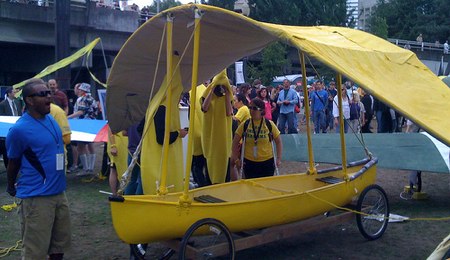OpenSCAD has been updated. The latest release of what is probably the best 3D modeling tool has been in the works for years now, and we’ve got some interesting features now. Of note, there’s a customizer, for allowing parametrizing designs with a GUI. There’s 3D mouse support, so drag out that weird ball mouse from the 90s. You can export in SVG, 3MF, and AMF. Update your install of OpenSCAD now.
New Hampshire is the home of BASIC, and now there’s a sign on the side of the road saying so. This is a New Hampshire state historical marker honoring BASIC, invented at Dartmouth College in 1964. Interestingly, there are 255 historical markers in New Hampshire, usually honoring bridges and historical figures, which means there’s an off-by-one error depending on implementation.
Because robots a great way to get kids into technology — someone has to repair the future robot workers of the world — DJI has release the RoboMaster S1. It’s a robot with four Mecanum wheels, something like a Nerf turret, a camera, and WiFi. The best part? It’s programmable, either through Scratch or Python. Yes, it’s drag-and-drop programming for line following robots.
If you have a C by GE Smart Light Bulb and connect a new router to your home network, you will need to disassociate your C By GE Smart Light Bulb with your old network. To do this, you first need to turn your bulb on for eight seconds, then turn off for two seconds, then turn on for eight seconds, then turn off for two seconds. Then turn the bulb on for eight seconds, and finally turn the bulb off for two seconds. Finally, turn the bulb on for eight seconds, then turn the bulb off for two seconds. Your bulb should blink three times, indicating it has dissociated with the WiFi network. If this procedure does not work, your light bulb is running an older version of firmware. This is why you put a physical reset button on your stuff, people.
Have a lot of Raspberry Pi hats but you want to play around with the ESP32? No problem, because here’s a Pi-compatible GPIO ESP32 board. It needs a catchier name, but this is an ESP32 that’s mostly compatible with the 40-pin connector found on all Pis. Here’s a Crowd Supply link.
















